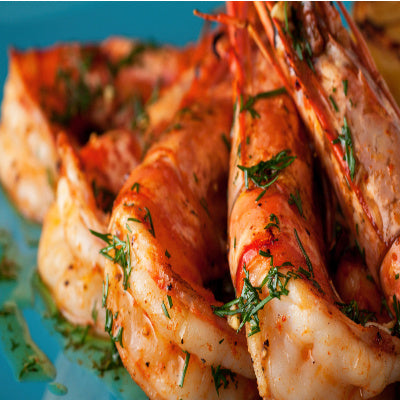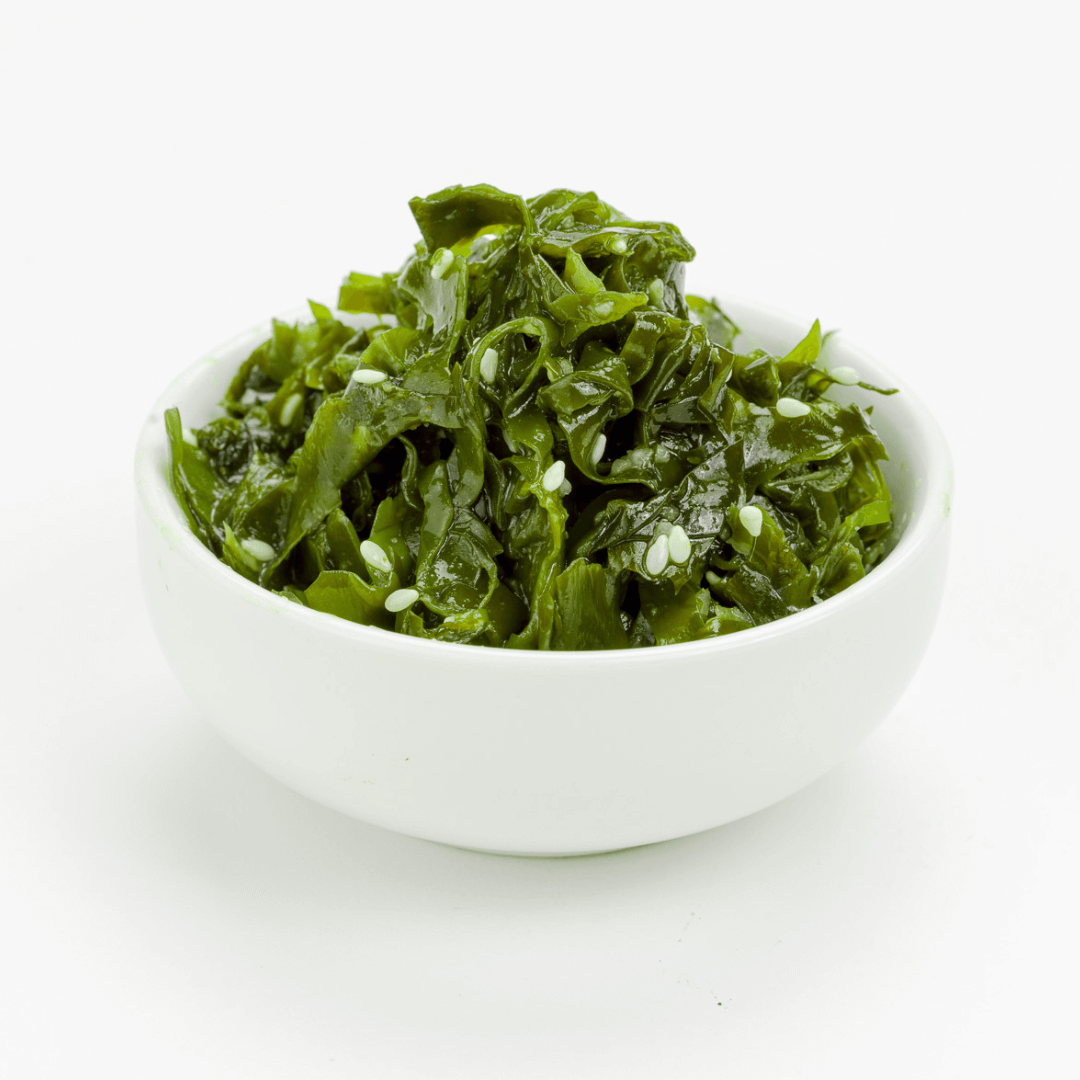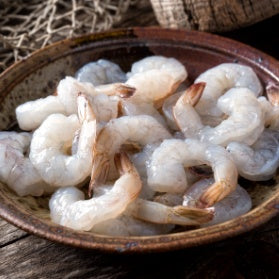Your Cart is Empty
FREE SHIPPING ON ALL ORDERS OVER $125!
FREE SHIPPING ON ALL ORDERS OVER $125!
FREE SHIPPING ON ALL ORDERS OVER $125!

TL;DR: Seafood offers incredible nutritional benefits and is easier to enjoy at home than you may think. This guide answers common questions about seafood nutrition, safety, and sustainability.
Seafood is one of the most complex and often misunderstood foods in the world. There are seemingly endless varieties of fish and shellfish available to enjoy. Many seafood lovers would not hesitate to order salmon, shrimp, or scallops at a restaurant. However, when it comes to preparing seafood at home, the uncertainty about how to buy, store, or cook it can cause hesitation and intimidation.
Likewise, it can be challenging for seafood lovers to find accurate and trustworthy seafood nutrition information. Many have questions about the differences between fresh vs frozen seafood, wild vs farmed seafood, and more.
These complexities can make this nutritious protein source seem mysterious or overwhelming, but it doesn’t have to be that way.
With over 60 years in the seafood industry, we at North Coast Seafoods hear a common set of questions time and time again. To help, we’ve broken down the most frequently asked questions about seafood, answering everything from how to choose quality products to how to cook them perfectly.
Continue reading to learn the truth about the nutritional benefits of seafood, and why it’s not as complex as you think.
Jump to Specific Questions:

Studies have shown that eating seafood twice a week helps reduce the risk of dying from heart disease by 36%! Talk about heart-healthy food!
Eating 2-3 servings (at least 8 ounces) of fish and shellfish each week, as recommended by the USDA, has been linked to the following possible benefits:
Every five years, the USDA revises their Dietary Guidelines, and each time seafood gets a bigger shout out for being a nutritional powerhouse. This recommendation was reinforced in the 2020-2025 Dietary Guidelines for Americans and is also supported by the American Heart Association (AHA). View them here.

Does it matter how your fish is caught? Actually, both Wild Caught and Farmed seafood can be high-quality, sustainable, and delicious choices. And both are essential to ensuring continued seafood availability for future generations.
When purchasing both wild caught and farmed seafood, it is important to check that the product is Certified Sustainable to ensure that it has been produced according to responsible standards. Look for the MSC logo on wild caught seafood and the ASC or BAP logos on farm raised seafood.
This is probably the question we get most often and a question that has an incredibly intricate, multi-dimensional answer. BOTH fresh and frozen can be excellent options, depending on a variety of factors.
Advancements in "Flash Freezing " technology have revolutionized frozen seafood, making it possible to retain its natural freshness, nutrients, texture, and flavor without compromising quality.
Fresh doesn’t inherently equate to superior quality, just like frozen doesn't always mean inferior quality. There is a lot that can happen between the time of catch, the time you are purchasing at the store level, and the time you are finally cooking.
When buying fresh seafood, it is important to purchase from a trusted supplier or retailer and evaluate quality based on the specifications laid out below. North Coast Seafoods is proud to offer premium quality seafood, available directly from the source, and delivered to your door.
Browse our online shop to learn more about our fresh and frozen offerings.
Can pregnant women eat seafood? How about breastfeeding women?
The answer is yes, and they are encouraged to eat fish and seafood as part of a healthy balanced diet!
Studies have actually shown that children gain an average of 7.7 full IQ points when their mothers ate seafood during pregnancy compared to those whose mothers did not eat seafood.
Most definitely! The nutrition that a proper seafood diet provides is influential in a child's physical and developmental health, the FDA and EPA support.
Read more about our Sea to Schools lunch program, right here.

By definition, the raising of aquatic organisms from juvenile through adult stage under carefully controlled conditions.
It is important to remember that just like farm-raised chicken - there are good farms and bad farms. North Coast Seafoods is committed to sourcing only from Certified Sustainable operations through our partnerships with the Best Aquaculture Practices (BAP) and the Aquaculture Stewardship Council (ASC) to ensure the highest quality process and end product.
Seafood is a nutrient dense food and an excellent source of protein, often with fewer calories and saturated fats as compared to other center of the plate proteins. See the figures below for a comparison to other center of the plate proteins, based on a 4-ounce raw portion.
Statistics pulled from the USDA Nutrient Database.

Check out our Seafood Nutrition blog series, written by our in-house Registered Dietitian. Learn more here!
Check out our blog posts on Seafood Sustainability, learn more right here!
Before diving into the particulars of overfishing, stocking density, and other important aspects of seafood sustainability, let's zoom out and focus on the big picture: virtually all forms of seafood contribute less to global warming and environmental degradation than beef and pork.
Research has shown that seafood is the most carbon-efficient source of protein on the planet. Seafood requires no land or additional water resources to harvest and even has a lower impact on wildlife compared to land-based proteins. Compared to protein sources harvested on land, seafood production produces much fewer greenhouse gas emissions and less freshwater pollution.
If you want to help the planet with a no-brainer, totally uncomplicated dietary modification, swap out that pork chop or T-bone for just about any type of seafood.
That said, some seafood is exceptionally sustainable - mollusks, wild fish from well-managed fisheries, and herbivorous farmed fish like tilapia raised without chemical or antibiotic use are good examples.
Simply put - sustainable seafood means seafood that is caught, farmed, or harvested using environmentally harmonious and socially responsible methods that does not jeopardize long term ocean health or stability of the species in question. Sustainability is crucial to ensure continued availability of seafood for future generations.
Both wild and farmed seafood can be sustainable. With seafood consumption rising worldwide, well-managed ocean-raised (farmed) fish can take pressure off wild fish populations and wild fisheries, where 90% of wild fish stocks are harvested at full capacity.
For Wild Caught Seafood , sustainability means the populations are well-managed and not overfished, and the fishing method has minimal impact on habitat and other wildlife (limiting bycatch and minimizing damage to marine habitats).
Sustainable fisheries in the US, Canada, and Europe are well-managed by government authorities. So, for New Englanders, local fish is reliably sustainable, as overexploited local stocks of certain types of seafood such as cod aren't open to commercial fishing.
For Aquaculture, sustainability means minimizing impacts to the environment by limiting habitat damage, pollution, escapes of farmed fish and using sustainable feed ingredients.
Contrary to popular belief, not all farmed salmon, for instance, is raised in pens stocked so tightly that their living conditions are dirty. In Norway, where some of the world's best salmon is raised, pens are sparsely stocked, so the fish have plenty of room to swim around; the tides flowing in and out of Norwegian fjords are vigorous, washing huge quantities of perfectly clean water through the pens every day.
As a protein category, seafood is a nutritional powerhouse. It’s packed with high-quality protein and heart-healthy fats. Almost all fish and shellfish can fit into a healthy diet, but certain types stand out for their exceptional nutritional benefits. Health experts recommend eating a variety of seafood at least 2 to 3 times per week to reap these benefits.
Nearly any seafood you enjoy comes with significant nutritional benefits, from protein to vitamins to omega-3s.
Proper storage and handling are absolutely critical to maintaining the quality and safety of seafood. Seafood is more perishable than many other proteins, so it must be kept cold and handled carefully to prevent spoilage or foodborne illness.
Here are some key guidelines for storing and handling seafood safely:
Always purchase seafood last during your grocery trip and keep it cold on the way home (use an insulated bag or cooler with ice packs). At home, store raw seafood in the coldest part of your refrigerator. Ideally, you'll store it at about 32°F, which is just above freezing. Make sure the fridge is 40°F or below, and plan to cook fresh fish within 1 to 2 days of purchase. For best results, cook the same day as purchasing for the freshest and tastiest results.
For fresh fish, it’s best practice to store it on ice, even in your refrigerator. Whole fish should be cleaned and placed in a shallow pan on ice. Fish fillets or steaks can be sealed in a plastic bag or container and then kept on ice.
Live shellfish,like live clams, mussels, or oysters need airflow. Never seal them tightly. Place live shellfish in a bowl or pan, cover with a damp cloth or paper towel, and keep them in the fridge.
Shucked shellfish (such as raw scallops, oysters out of the shell, or clams) should be kept in a closed container on ice. They should be used within a day or two, or frozen for longer storage.
Store fresh shrimp, squid, and scallops in a leak-proof plastic bag or container on ice in the refrigerator until you’re ready to cook them.
Handle raw seafood with care to prevent bacteria from spreading in your kitchen. Keep raw fish and shellfish separate from other foods at all times. That includes other items in your shopping cart, your fridge, and even during preparation.
Use separate cutting boards for raw seafood. If possible, choose non-porous ones like plastic or glass that can be sanitized.
Wash your hands thoroughly with soap and warm water for at least 20 seconds after handling raw seafood. Finally, sanitize any knives, cutting boards, countertops, or utensils that have come into contact with raw seafood before using them again.
For the best results, thaw fish or shellfish overnight in the refrigerator. If you need to thaw it faster, place the seafood in a sealed plastic bag in a bowl of cold water. Change the water every 30 minutes until thawed.
Never thaw seafood at room temperature on the counter, as this can allow bacteria to grow.
Once you’re ready to cook, make sure you cook seafood thoroughly. Most fish and shellfish should be cooked to an internal temperature of 145°F. At this temperature, fish flesh turns opaque and flakes easily with a fork, andbivalve shellfish like mussels or clams will open up.
Seafood is one of the most nutrient-dense and sustainable protein sources available. By choosing a variety of seafood and handling it properly, you can enjoy its full range of health benefits with confidence.
Ready to enjoy premium quality seafood at home? Explore our fresh and frozen selections, delivered directly from the source to your door. Shop North Coast Seafoods.
November 24, 2021
I liked it when you said that seafood is one of the most complex and misunderstood foods in the world. There are seemingly endless varieties of fish and shellfish available to enjoy. We agreed to have a family dining by the end of the week. I will keep your tip on how to find the best Seafood Restaurant for family dining. https://www.dthmaui.com/down-the-hatch
August 12, 2021
I found it interesting when you said that eating 2-3 servings of fish and shellfish weekly could lower the risk of heart disease and stroke and could improve sleep quality and mental health. Our family has a history of heart diseases, so it is important for me to keep my heart healthy at all times. Since I am planning to find a restaurant where my husband and I can have our dinner date this Saturday, I will consider finding a seafood restaurant.
Comments will be approved before showing up.



Sign up to receive the best seafood recipes, first access to new products, exclusive discounts and more!
kia N
January 05, 2022
I found it interesting when you said that eating at least 8 ounces of fish and shellfish each week lowers the risk of heart disease and stroke and helps to improve memory and cognition. This sounds like a great deal for me and my mother who both have history of heart problems. I am planning to meet her next Sunday to spend some quality time, so I will consider finding a restaurant that offers southern style seafood dishes. https://redcrabhouse.com/